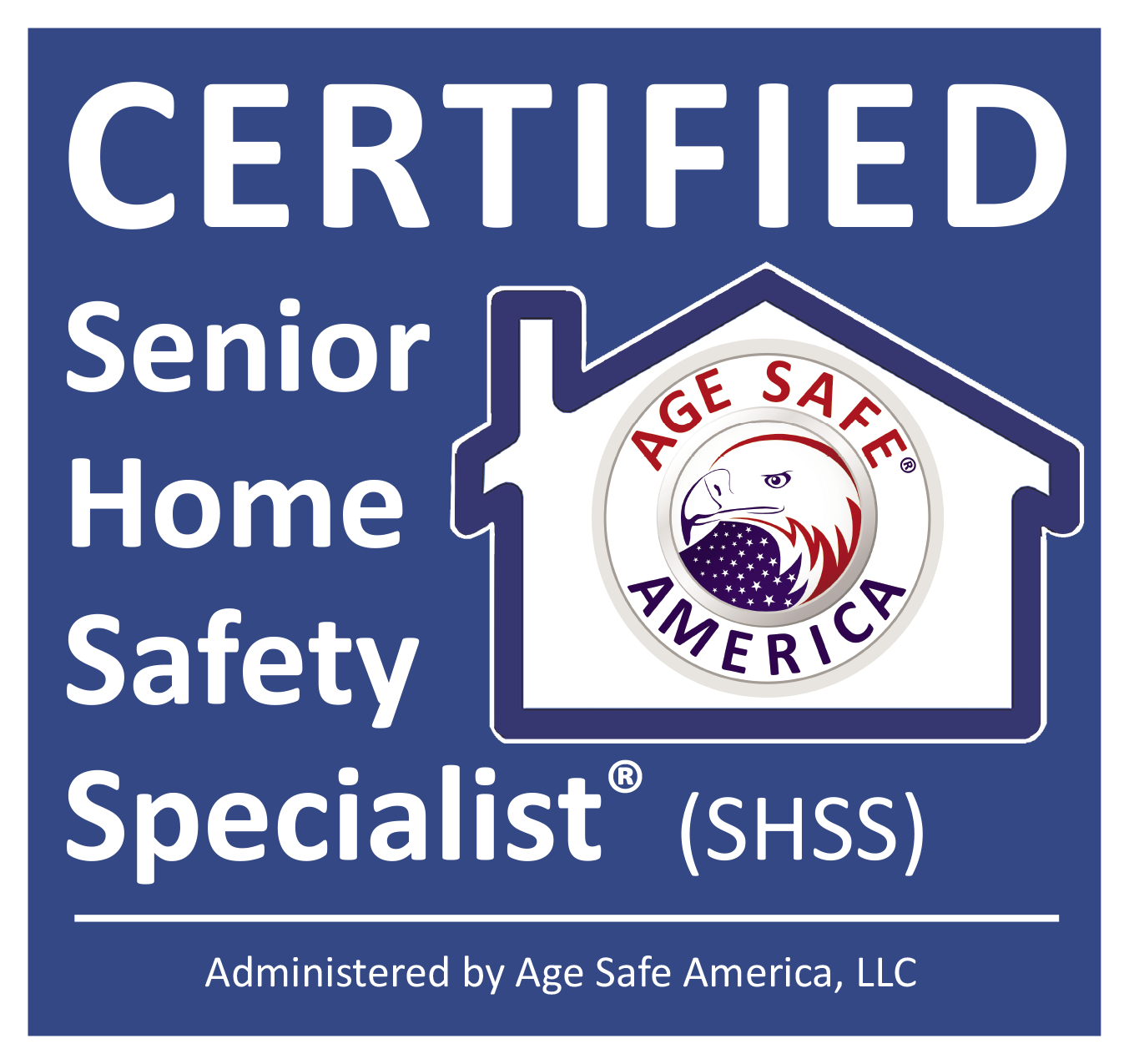Safety. Security. Longevity.
Home Safety for Seniors – Statistics and Solutions
Falls are the leading cause of fatal injury and the most common cause of nonfatal trauma-related hospital admissions among older adults. As more Americans age, falls will become even more numerous and costly than they are now. The U.S. Centers for Disease Control and Prevention puts these staggering statistics in a context that really brings the problem home: one out of every three seniors falls each year; every 11 seconds, an older adult is treated in an emergency room for a fall; every 19 minutes, an older adult dies from a fall. As alarming as they are, these documented statistics fall short of the actual numbers since many incidents are unreported by seniors and unrecognized by family members or caregivers. There are potentially millions more unreported falls.

Falls account for 25% of all hospital admissions and 40% of all nursing home admissions. 40% of those admitted will never return to independent living and 25% will die within one year.
The majority, 55 percent, of fall injuries among older people occurs inside the home and an additional 23 percent happen outside, but near the house. More fall injuries are caused by falls on the same level (vs. stairs) and from a standing highlight, i.e. tripping while walking. Many of these falls, and the resulting injuries, can be prevented by taking steps to eliminate or fix potential hazards in and around the home.
Falls and related injuries also bear enormous financial implications to individuals, families, and the health care system. A falls-related hospital stay costs an average of $30,000. Each year, Americans spend a total of approximately $60 billion in medical costs alone for fall injuries. By 2030 costs are expected to soar beyond $100 billion annually.
Safety. Security. Longevity.
Age Safe® America
Since 2015 a national membership, training, advocacy and services organization.
Here’s why we developed Age Safe® America.
90% of older Americans say they want to age-in-place (meaning to stay in their own home instead of assisted living), yet 85% have done nothing to prepare their homes for aging. Plus much of the nation’s housing inventory lacks basic accessibility features, preventing older adults and those with disabilities from living safely and comfortably in their homes.
A New England Burden of Disease (BODE) report stated that “home safety assessment and modification” appears to be “a very cost-effective health sector intervention.” And even more cost-effective was targeting this intervention to older people with previous injurious falls. The cost-benefit analysis found a “33 percent reduction in spending to treat fall injuries over three years, and potentially a six-fold savings in ‘social costs’ related to such injuries.” In that study the average cost per home modification was $448.
A 2014 report by the Harvard University Joint Center for Housing Studies found that the five most important “universal design” features in the home are: no-step entries, extra-wide hallways, accessible living spaces on the ground floor and accessible light switches and door levers. However, the Harvard cites survey data indicating that only 1% of housing units in America have all five of these features. Or, as a Washington Post article headlined, “America is rapidly aging in a country built for the young.”
Simple changes can make measurable impact.
The overall goal is to make the home safer. Typical changes include the following .
Getting safely and securely into and out of the house.
- Better outdoor lighting to get you from your car to the door.
- Attractive ramps or a zero-step entrance for the home.
- A package shelf by front door.
- Handrails at existing steps and porches.
- A front door with sidelight for security.
- Fewer or no stairs.
Kitchen changes for easier meal preparation & eating.
- Lever-handle faucets with pull-out spray.
- Raised dishwasher to avoid back strain (a good idea for front-loading washers and dryers, too).
- Rolling island that can be placed back under the counter.
- Revolving corner shelves and pull-out shelves.
- Lower, side-opening oven.
- Pull-out cutting board.
- Adjustable height sink.
- Side-by side refrigerator with slide-out shelves and a water/ice dispenser.
- Cooktop with controls on front.
- Larger, friendlier cabinet and drawer pulls.
Bathroom – #1 Accident location in your home.
- Attractive grab bars in the shower.
- Lever handles on faucets.
- Slide-bar-type hand-held shower, for sitting or standing.
- Shampoo nooks inset in the wall.
- Curbless showers so that there is nothing to step over or rolled into with a wheelchair.
- Tub and shower controls moved closer to entry point.
- Anti-scald, temperature and pressure balanced tub shower valves for safer bathing.
- Widened entry doors to at least 32.”
- 32”-36” pocket doors.
- Higher toilets with non-slam seats and lids.
Moving around within the house.
- Improved lighting with recessed fixtures in common areas and hallways.
- Lever handles on doors and windows.
- Lower light switches and thermostats; raised outlets.
- Planning for a future elevator by stacking closets.
- Adding blocking in walls for future chair lift at stairs.
- Wider doors that accommodate wheelchairs and walkers.
Let’s not forget the importance of Fire Safety
- People between 65 and 74 are nearly TWICE as likely to die in a fire.
- People between 75 and 84 are nearly FOUR times as likely to die in a fire.
- People ages 85 and older are more than FIVE times as likely to die in a fire.
- Careless smoking is the LEADING cause of fire deaths and second leading cause of injuries among people ages 65 and older.
- Heating equipment is the SECOND leading cause of fire death and the third leading cause of injury to people ages 65 and older.
- Cooking is the THIRD leading cause of fire deaths and the leading cause of injury among people ages 65 and older.
100% of ER doctors agree that an annual Home Safety Assessment is important to keep seniors safe at home.
A comprehensive Home Safety Assessment can pay for itself by avoiding the high cost of injury or assisted living.
Safety. Security. Longevity.
You Can Make a Real Difference.
This course is designed to empower our graduates with actionable knowledge, a strong market differentiator, and proven revenue generator.
Watch this 3-minute video.

